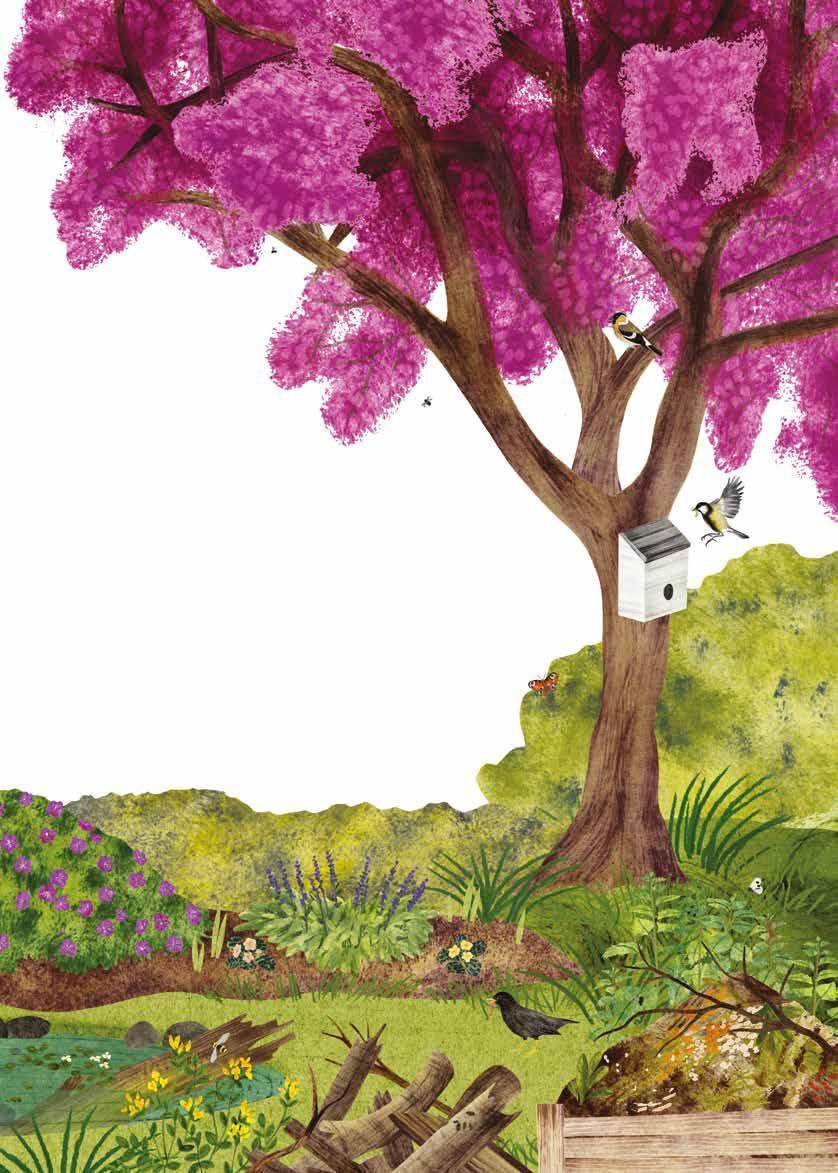
2 minute read
Gardening for wildlife
Spring
wildlife gardening
Advertisement
Our gardens come alive in spring. Ponds fill with mating amphibians, borders buzz with the season’s first bees, and everywhere else, from trees and hedges to fences and roof panels, birds are busy singing to defend territories, mating or feeding young. It’s an exciting time of year.
Kate Bradbury
is passionate about wildlifefriendly gardening and the author of Wildlife Gardening for Everyone and Everything in association with The Wildlife Trusts.
While all of this goes on around us, there are things we can do to make our gardens even better for wildlife. First, take a look at your borders – in early spring they should be carpeted with flowers such as spring-flowering hellebores, lungwort, primroses and other primulas, and bulbs like crocus and snake’s-head fritillary. Later grape hyacinths, alliums, cranesbills, bugle and cuckooflower take centre stage. The early flowers are the most important as they provide food for pollinators emerging from hibernation – remember that daffodils and tulips are usually ignored by bees. Make a note of which flowers you have, and fill gaps with pollinator favourites.
Ponds are full of mating amphibians and invertebrates, so are best left alone now. However, it’s important to check that wildlife can enter and exit your pond safely – add a log or large stone to help wildlife access the water safely. If you don’t have many plants in the pond you can add more now, as long as you don’t disturb the water too much. Aim for a mix of floating, submerged and deep-water plants, with around two-thirds of the surface of the pond covered. Plants absorb nitrates from the water and therefore inhibit the growth of algae. They also provide hiding places for tadpoles and other larvae from
predators such as diving beetles and dragonfly nymphs. Choose native marginals such as brooklime and water forget-me-not, floating plants such as frogbit, and oxygenators like hornwort and water crowfoot.
Around the pond, think ahead to summer, when froglets and toadlets may be exiting the water for the first time. Let the grass there grow long and grow plants to protect them from predators. Cranesbill geraniums and birds’ foot trefoil work well around ponds, providing plenty of shelter for amphibians big and small.
If you have a meadow then cut it back in early spring and remove clippings, then let it grow until autumn. As well as providing wildflowers for pollinators, the long grass will provide foodplants for caterpillars and shelter for beetles and other invertebrates, plus amphibians, small mammals and even hedgehogs.

Get more wildlife gardening tips
on our website suffolkwildlifetrust. org/gardeningadvice








